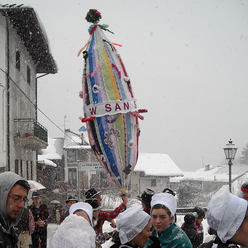Itinerary 5 - The colour of winter

There is a thin common thread that unites the traditional feasts of the Susa Valley: certain actions and gestures that have their roots in ancient pre-Christian rituals related to fertility cults and nature are repeated in the villages of the valley and in those placed on the mountains.
The young conscripts of the village of Chiomonte celebrate their patron saint (saint Sebastian, 20th January) with the procession and dance of the Puento.
In the village of Giaglione the young women are in charge of the task of organizing the patron-saint festivals (saint Vincent, 22th January) and the dance of the Bran, which is a structure decorated with flowers, ribbons and colored bows. They are accompanied by four swordsmen whose dance create characteristic figures. The Dance of the Swords of Giaglione (but it is still alive also in Venaus and San Giorio) is characteristic of the entire Alpine arch. The Dance is associated with the springtime rebirth of life. The swordsmen costumes are characterized by a brightly colored jacket decorated with ribbons and gold braids and their hats are characterized by a rich adornment of flowers and multicolored ribbons: the circular movements of the upheld swords or the stabbing of the ground are carried out in a specifically choreographic manner as a symbolic expression of the fertility of the earth. In the village of Venaus the dance open and close the festival in honor of saint Blaise and saint Agatha (2nd and 3rd February); in the village of San Giorio is held in the occasion of the patronal feast in honor of saint George (24th April). The swordsmen or “Spadonari”, dance on the music played by a band and accompany the statue of the patron saint, carried in procession by the young conscripts. In the afternoon the people of the village staged the killing of the feudal lord on the ramparts of the castle, in memory of the ancient legend of the terrible kidnapping of a young bride and the killing of the wicked feudal lord. In the village of Urbiano (near Mompantero) takes place a feast called “the dance of the bear”. During the festival in honor of saint Brigid (1st February) a man with a costume made with sheep- and goat-skin (the “bear”) come down from the mountains near Urbiano, and walk through the village. The bear is finally tamed when he dances with the most beautiful girl of the village in the square of Urbiano.
The feast usually takes place on the first Sunday closest to the day dedicated to the patron saint.
Activities
In the villages of Chiomonte, Giaglione and Venaus you can participate in the celebrations for the patron saint, enjoy the dance of the Puento or the beautiful figures of the dance of the swordsmen and dance with the young conscripts. You can taste a good vin brulé (mulled vine) and others typical products of the Susa Valley or discover the immense cultural and artistic heritage of the small alpine villages of the Susa Valley. In the village of Urbiano you can take part in the “bear hunt” of the feast, following the men dressed as hunters or play in some folk dance. In the village of San Giorio you can see the Dance of the Swords and you can get involved in the staged of the killing of the feudal lord. You can also taste local products after seeing the frescoes of the Chapel of saint Lawrence.
During these traditional festival you have the opportunity to discover the cultural heritage of Susa and Novalesa.
You can visit the abbey of Novalesa, where the Benedictine monks accompany you to discover the beautiful Chapel of saint Eldrado with frescoes of the XI century, built in a panoramic position and surrounded by an immense park. The abbey today also houses the Archaeological Museum which contains the archaeological findings emerged from the excavation campaigns and also a section dedicated to the restoration of books, an activity that is still practiced in the abbey. Then you can go to Novalesa for a walk in the narrow alleys and courtyards of this characteristic alpine village: the centre of Novalesa is dominated by the parish church of saint Stephen with some pictures painted in the style of Caravaggio, the Museum of Alpine Religious Art and other artistic works.
The discover of the history and the art of the city of Susa start with a walk in its beautiful streets, where you can see the monuments and the rich cultural heritage of this city, also called the “Door of Italy” due to its strategic position. Other items worthy of note (dated between the IV and the XX century) are housed in the Museo Diocesano di Arte Sacra and in the Museo Civico in the Castle of Adelaide.
Investigations
Suggestions
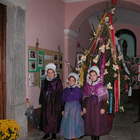 Bardonecchia
Bardonecchia
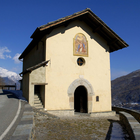 Chiomonte
Chiomonte
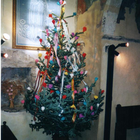 Chiomonte
Chiomonte
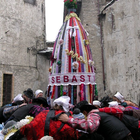 Chiomonte
Chiomonte
 Condove
Condove
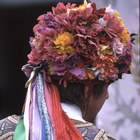 Giaglione
Giaglione
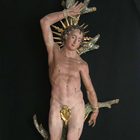 Giaglione
Giaglione
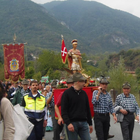 Meana di Susa
Meana di Susa
 Mompantero
Mompantero
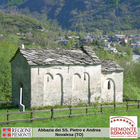 Novalesa
Novalesa
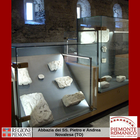 Novalesa
Novalesa
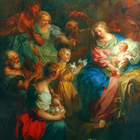 Novalesa
Novalesa
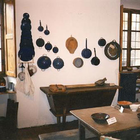 Novalesa
Novalesa
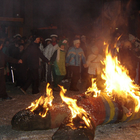 Salbertrand
Salbertrand
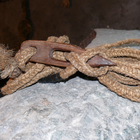 Salbertrand
Salbertrand
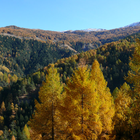 Salbertrand
Salbertrand
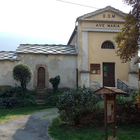 San Giorio di Susa
San Giorio di Susa
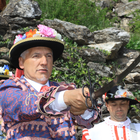 San Giorio di Susa
San Giorio di Susa
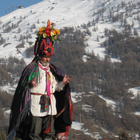 Sestriere
Sestriere
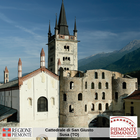 Susa
Susa
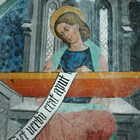 Susa
Susa
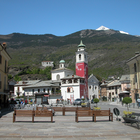 Susa
Susa
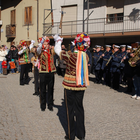 Venaus
Venaus
| Bardonecchia | Chantè |
| Chiomonte | Chapel of Sant'Andrea of Ramats |
| Chiomonte | Charintel |
| Chiomonte | Puento |
| Condove | Ancient Carnival of Lajetto |
| Giaglione | Dance of Swords |
| Giaglione | Museum of Alpine Religious Art |
| Meana di Susa | Bran |
| Mompantero | Bear of Mompantero |
| Novalesa | Benedictine Abbey of SS. Pietro and Andrea |
| Novalesa | Novalesa Archaelogical Museum |
| Novalesa | Museum of Alpine Religious Art |
| Novalesa | Ethnographic museum of mountain life in Cenischia Valley |
| Salbertrand | Carnavà du Gueini |
| Salbertrand | Colombano Romean Ecomuseum |
| Salbertrand | The Gran Bosco Natural Park |
| San Giorio di Susa | Chapel of San Lorenzo |
| San Giorio di Susa | Dance of Swords |
| Sestriere | Historical Carnival of Champlas du Col |
| Susa | Cathedral of San Giusto |
| Susa | Convent of San Francesco |
| Susa | Diocesan Museum of Sacred Art |
| Venaus | Dance of Swords |
View as a list
Services
- Proloco Bardonecchia tourist association - Bardonecchia
- Bardonecchia Tourist Consortium - Bardonecchia
- Residence Chalet della Guida - Bardonecchia
- Ristorante 'l Fouie - Bardonecchia
- Tourist Office of Bardonecchia - Bardonecchia
- Massi Hotel Valle di Susa - Bruzolo
- Proloco of Condove tourist association - Condove
- Cré Seren farmerhouse - Giaglione
- B&B Scotty and co. - Gravere
- Della Posta hotel restaurant - Novalesa
- El Dorado hotel restaurant - Novalesa
- B&B La Ressia - Novalesa
- B&B Strada Antica - Novalesa
- Ristorante delle Alpi - Novalesa
- Management body of the Protected Areas of the Cottian Alps - Salbertrand
- Ristorante il Gigante e la Gallina - Salbertrand
- B&B Baita Evelina - San Giorio di Susa
- Beato Rosaz Center of the Franciscan missionary nuns - Susa
- Diocesan Cultural Center of Susa - Susa
- Napoleon Hotel - Susa
- Susa & Stazione hotel - Susa
- Osteria della Marchesa - Susa
- Tourist office of Susa - Susa
